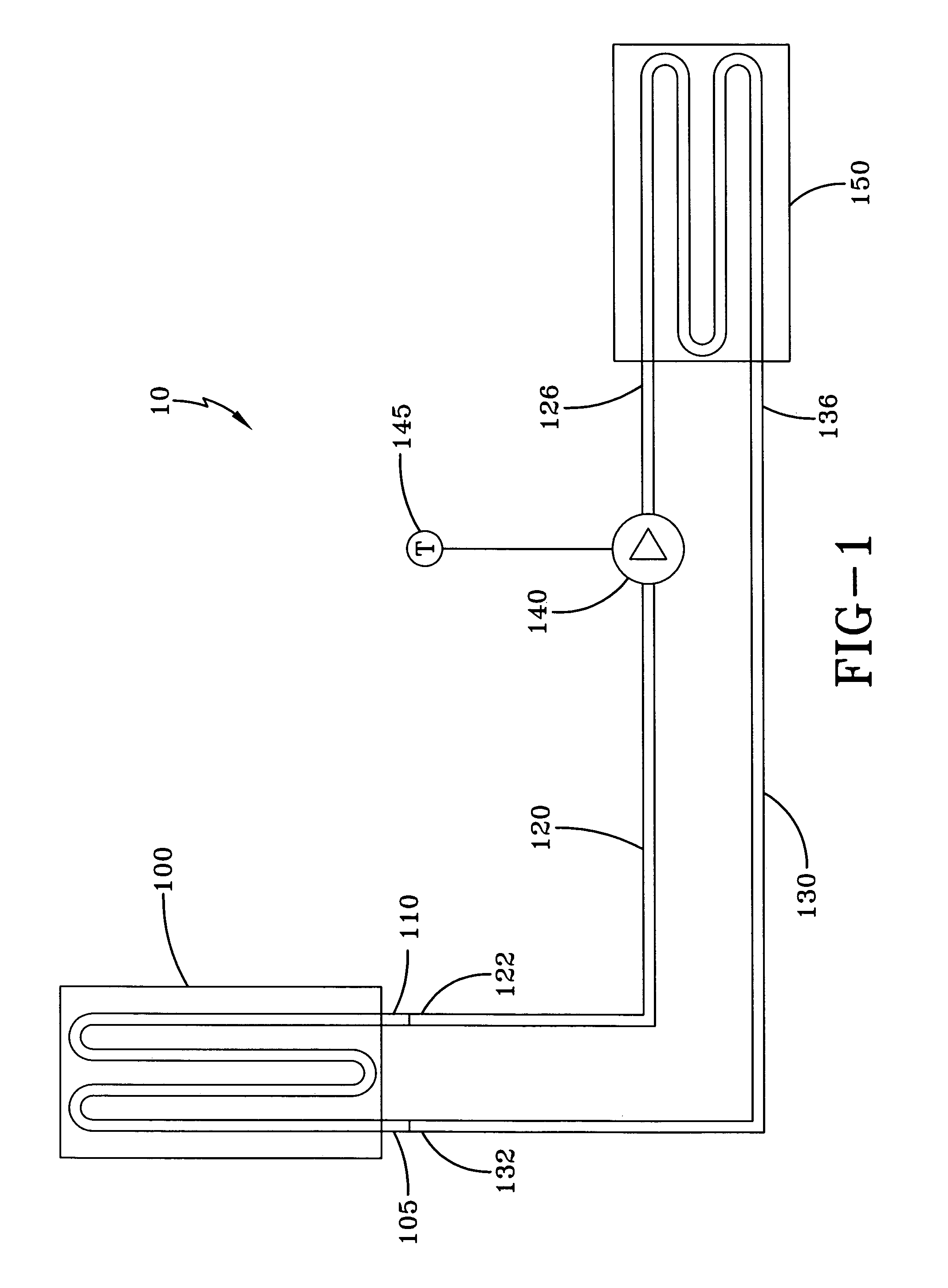Heat source for radiant heating system
a radiant heating and heat source technology, applied in indirect heat exchangers, lighting and heating apparatus, heating types, etc., can solve the problems of affecting the efficiency of the heating system, so as to achieve the effect of lowering the temperature of the air
- Summary
- Abstract
- Description
- Claims
- Application Information
AI Technical Summary
Benefits of technology
Problems solved by technology
Method used
Image
Examples
Embodiment Construction
[0016]FIG. 1 is a schematic illustration of an apparatus 10 that is an embodiment of the present invention. The apparatus 10 comprises: an air-to-fluid heat exchanger 100; a fluid supply conduit 120; a fluid return conduit 130; a pump 140; a secondary thermostat 145; and a radiant heating loop 150. FIG. 2 illustrates the apparatus 10 installed in conjunction with a forced air furnace 20 connected to a hot air duct 25.
[0017]Referring to FIG. 2, the forced air furnace 20 can be any forced air furnace as commonly known by those skilled in the art, such as for example a gas furnace, oil furnace or heat pump. The forced air furnace 20 will typically be the primary source of heating for the building and will be connected to the hot air duct 25. The hot air duct 25 is operative to distribute an air flow that is heated by the forced air furnace 20 throughout the building. The forced air furnace 20 will typically be controlled with a furnace thermostat 30 that is located in the main occupied...
PUM
 Login to View More
Login to View More Abstract
Description
Claims
Application Information
 Login to View More
Login to View More - R&D
- Intellectual Property
- Life Sciences
- Materials
- Tech Scout
- Unparalleled Data Quality
- Higher Quality Content
- 60% Fewer Hallucinations
Browse by: Latest US Patents, China's latest patents, Technical Efficacy Thesaurus, Application Domain, Technology Topic, Popular Technical Reports.
© 2025 PatSnap. All rights reserved.Legal|Privacy policy|Modern Slavery Act Transparency Statement|Sitemap|About US| Contact US: help@patsnap.com



